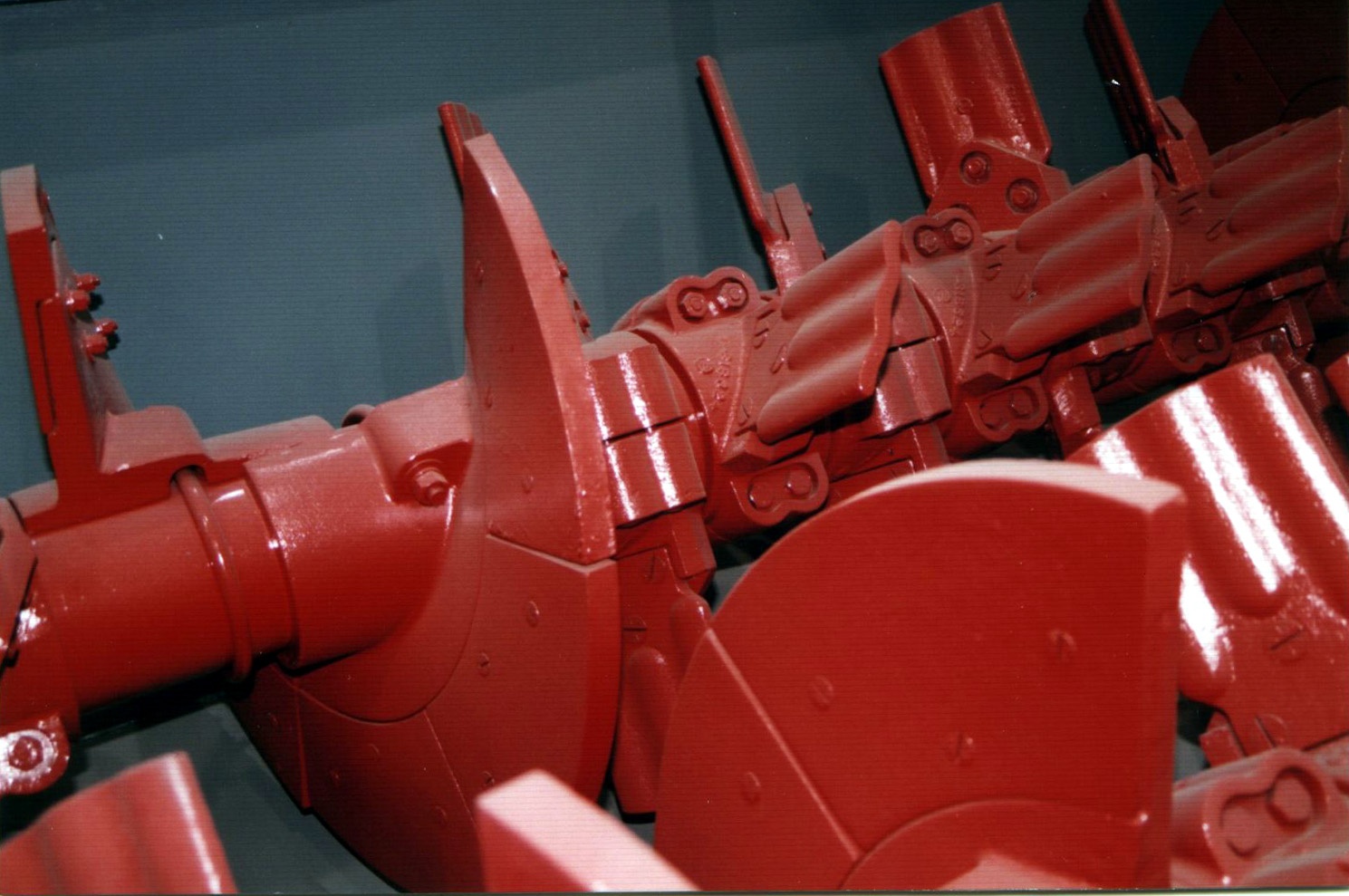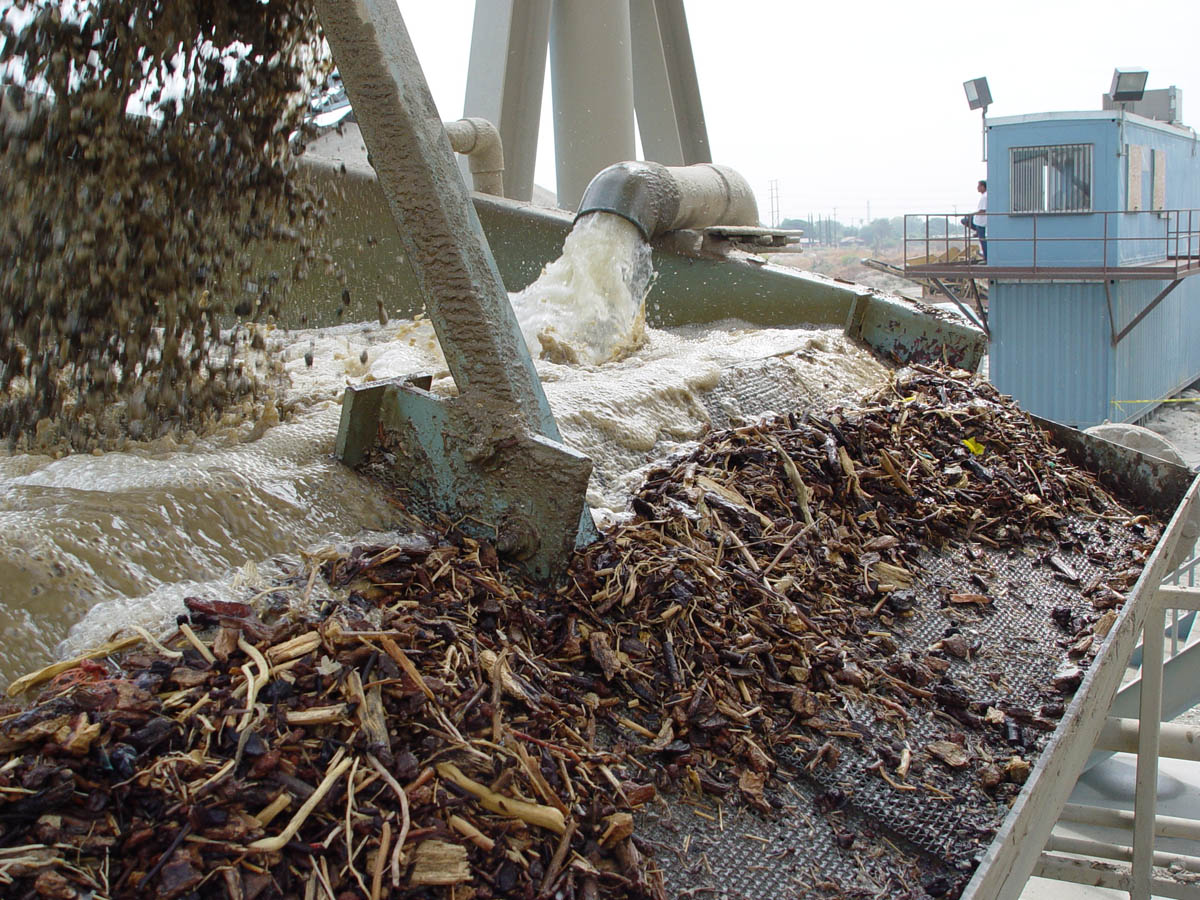
Improving Your Efficiency with Coarse Material Washers
We always want to do more with what we have, as improving our efficiency allows us to be more productive. When it comes to washing sand and gravel products, improving efficiency and productivity leads to increased profits.
Coarse Material Washers are designed to improve cleaning efficiency by scrubbing deleterious material from gravel or crushed stone feeds. They are manufactured with alternating spiral flights and paddles on the conveyor shaft to abrade and break down any clays or crusher dust clinging to the particles in the feed. Other lightweight deleterious material, such as twigs, is floated out over the weirs by a rising current of water and carried away with the wastewater.
Improving the Efficiency of Your Coarse Material Washer
When it comes to improving the efficiency of your Coarse Material Washer, you can add paddles to the conveyor shaft to increase the scrubbing capabilities of the machine. Increased scrubbing means a cleaner end product. Adding more paddles to the conveyor shaft is ideal for more difficult washing requirements.
Coarse Material Washers come standard with four sets of paddles on the lower end of each conveyor shaft. The remaining part of the shaft is covered in spiral flighting. This spiral flighting can be removed to accommodate the addition of more paddles when increased scrubbing is required.
Replacing Spiral Flights With Paddles

Coarse Material Washers use a combination of spiral flights to convey the material and corrugated paddles to scrub the material.
Spiral flights can be easily replaced with paddles, as the two were made to be interchangeable on the units that are 36” and smaller. On the 44” Coarse Material Washers, the spiral flights can still be replaced with paddles, but their weld-on construction makes field replacement more difficult. Both the spiral flights and paddles are mounted to the shaft via cast hubs, which enables their simple replacement. When replacing the spiral flights with paddles, one set of paddles takes the place of one screw flight.
Keep in mind, however, that replacing spiral flights with paddles will slow down the progression of material through the washer. The increased retention time is what helps to provide a more thorough cleaning.
Depending on the amount of paddles you add, replacing the spiral flights can also require an increase in power to turn the shafts. Adding six or more sets of paddles to the conveyor shaft will require the motor size to increase by one-third.
You many also want to note that the addition of paddles will slow down the Coarse Material Washer’s capacity; replacing the entire shaft with paddles will decrease capacity by 50%. This is because the material is retained longer in the washer tub for more increased scrubbing. A full-paddle Coarse Material Washer will easily break down soluble mud and insoluble clay balls.
How to Remove Spiral Flights and Add Paddles
To replace the spiral flights on the conveyor shaft with paddles, first ensure that you have read the Coarse Material Washer’s Installation, Operation and Maintenance Manual, that you have read and understand all safety tags on the machine and that you are following your site’s specific safety procedures.
- To prevent injury, the first step you must take when replacing the spiral flights with paddles is to turn off the power to the Coarse Material Washer. Place a padlock on the disconnect switch, and instruct each person helping to perform the replacement to do the same. Then, attempt to start the machine just to be sure that it is indeed de-energized.
- Using an impact driver, unbolt and remove one screw flight. If replacing spiral flights on a 44” unit, use an acetylene torch to cut off the welded-on flight.
- Install a set of hubs onto the conveyor shaft where you just removed the spiral flight, and bolt these together, torqueing to the specifications outlined in the Installation, Operation and Maintenance Manual. If you have a single screw Coarse Material Washer, you will use right-hand hubs and bolts. If you have a double screw Coarse Material Washer, you will use both right-hand and left-hand hubs and bolts. The right-hand hubs will go on the screw shaft located on the right-hand side when the washer is viewed from the drive end. The left-hand hubs will go on the screw shaft located on the left-hand side when the unit is viewed from the drive end.
- Attach a paddle to each hub, and bolt the paddle to the hub, torqueing the bolts to the recommended specifications.
- Repeat steps 2 and 4 as necessary until you have replaced the desired number of spiral flights with paddles.
- Be sure to leave one full revolution — two screw flights — at the bottom of the conveyor shaft to facilitate movement of the material and minimize wear on the back of the washer tub.
- When you have finished replacing the spiral flights with paddles, remove the padlocks from the power switch, and restore power to the Coarse Material Washer.
- It is recommended that you have an electrician measure the amps being drawn by the motor under full load to confirm adequate power so as not to overload the motor. This is especially important if you’ve added six or more sets of paddles, which will increase the power requirements.
Increasing Trash Removal

Coarse Material Washers remove twigs and other lightweight deleterious material.
If you are using your Coarse Material Washer to remove floatable material, such as roots, sticks and vegetation, you can increase the elevation of the machine to improve the efficiency. Coarse Material Washers are installed at 15 degrees incline. Setting the machine to 18 degrees and introducing the feed over the paddles will allow lightweight material to overflow the weirs.
Increasing the elevation will, however, reduce the capacity of the Coarse Material Washer.
Feeding the Coarse Material Washer
Another way to ensure efficiency with your Coarse Material Washer is to monitor your feed material. Feeding your Coarse Material Washer material that is larger than it is designed to handle can damage the machine. The 24” and smaller units can handle material with a maximum size of 2”, while the 30” and 36” units can handle material with a maximum size of 2.5” and the 44” and 48” units can handle material up to 3” maximum. It is recommended that you prescreen the feed to eliminate oversize and prevent damage to the Coarse Material Washer.
Routine Maintenance Checks
Conducting routine maintenance checks is a great way to determine if your Coarse Material Washer is operating at its best. These checks should include inspections of the V-belts, bearings, overflow weir, spiral flights and paddles and more.
- Inspect the V-belt drive to ensure the belts have the proper tension. Correct tension is key to long belt life. Loose belts can slip and cause excessive wear or snap suddenly and break when the motor starts. Maintaining proper tension can give the belts a 50% to 100% longer life.
- Check for any worn or frayed belts. It is also a good practice to wipe down the belts with a dry cloth to remove any dirt or grease that can reduce belt life.
- Check for evidence of water leakage in the outboard bearing vent opening relief slot, the purpose of which is to allow excess grease to pass through and any leaking water to escape so it doesn’t damage the bearing. Water leakage could indicate the shaft seal needs replaced, and it should be examined for wear. You can inspect the seal by prying the seal lip back with a bar.
- Check that the relief slot isn’t plugged with grease, as most failed bearings do so because of a plugged relief slot.
- Check that the overflow weir is level. This weir is able to be adjusted to accommodate out-of-level conditions to improve trash removal.
- Inspect the paddles for breakage or signs of wear, which can reduce operating efficiency. Paddles have squared leading edges for maximum scrubbing, and worn paddles can be identified by their resemblance to a boat or airplane propeller. Worn paddles don’t have as much contact with the material and therefore reduce the scrubbing capabilities.
- Inspect the machine for any loose bolts, including on the supports, paddles, spiral flights, drive and shaft drive coupling.
- Check that the shaft seals on the gear reducer aren’t leaking.
- Check the oil level in the gear reducer when the Coarse Material Washer is in operating position but not running. Add oil through the pipe nipple under the breather cap as required to maintain the operating level. The oil level should be at the pipe plug opening located on the front of the gear case.
- For a new or rebuilt gear reducer, drain the oil after 80 hours, or two weeks, and filter it to remove any foreign material that might have accumulated during that time. Refill the gear reducer with the filtered oil. Then, drain and replace the oil after every 2,500 hours or six months of operation, whichever comes first.
Improving efficiency with your Coarse Material Washer is all about making sure the machine is in peak operating condition. Following recommended installation instructions, prescreening the feed and following a routine maintenance schedule can ensure optimum operation, while increasing scrubbing capabilities with the addition of paddles can give you a cleaner end product.
Don’t miss a future post from Eagle Iron Works! Subscribe today to learn what Eagle Iron Works equipment can do for you!



